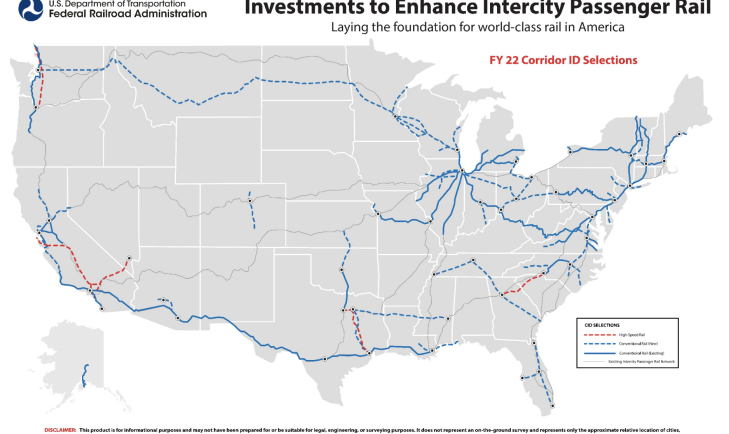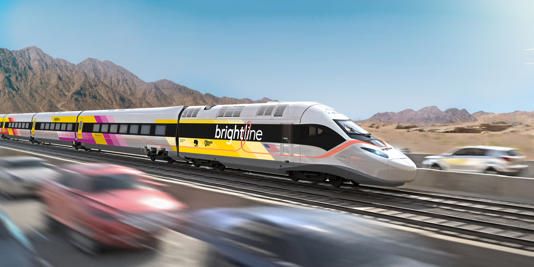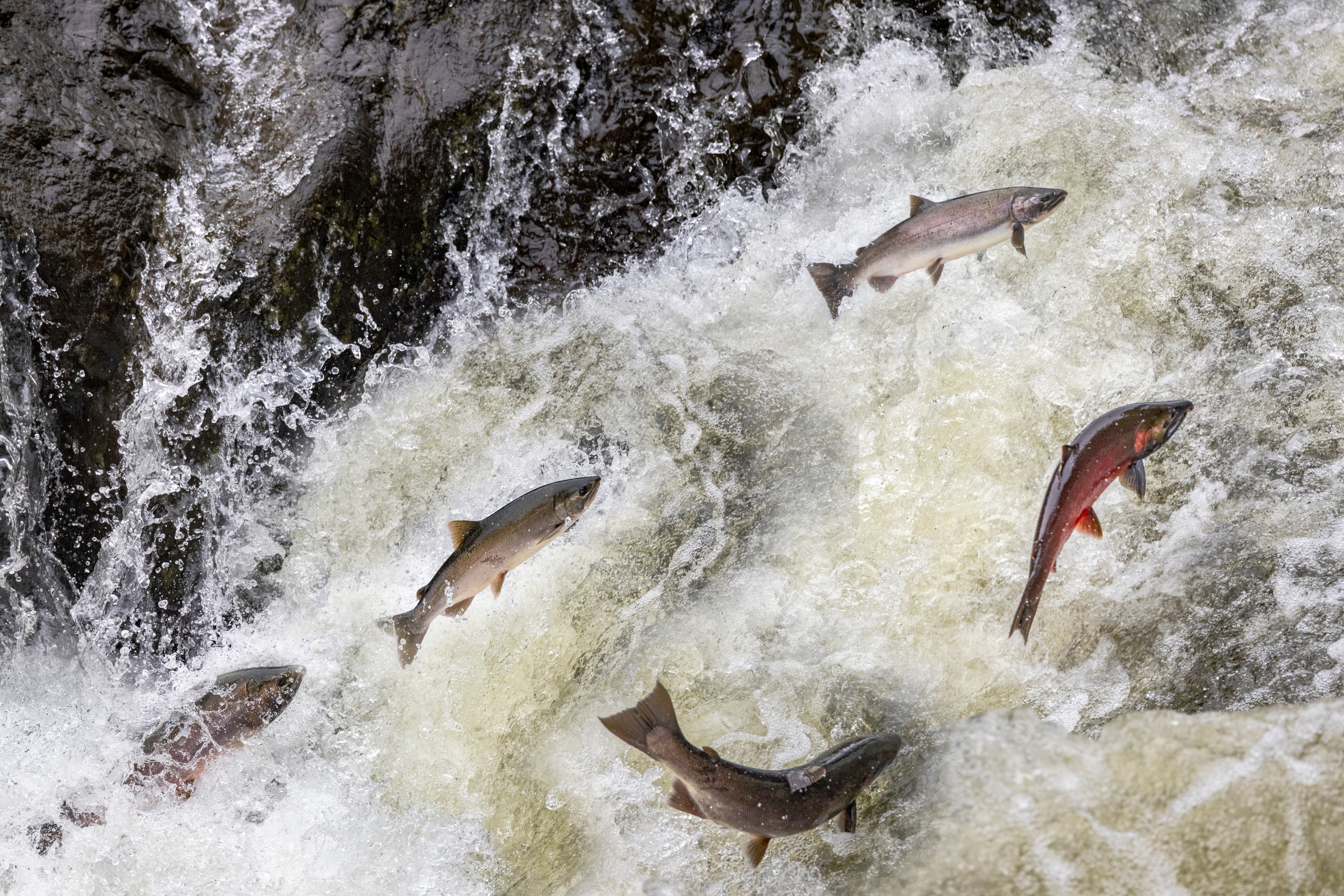12/21/23
Best of the West: Rail’s revival; Carbon capture permits; Tribal land management agreements; Solar energy’s big year; and a historic coho salmon run

The Western Governors' Association keeps you updated on the latest news in the West. Here are the top stories for the week starting December 18, 2023. (Photos courtesy of The U.S. Department of Transportation, KVVU Las Vegas, and Danita Delimont).
The Federal Railroad Administration announced $8.2 billion in funding to 10 major passenger rail projects as well as grants to help guide the development of 69 rail corridors across 44 states.
 The largest portion of the funding is dedicated to creating a brand-new high-speed rail corridor between Las Vegas, Nevada, and southern California, which is expected to serve 11 million people annually, and high-speed rail service through California’s Central Valley to connect San Fransico and LA, supporting travel with speeds up to 220 mph.
The largest portion of the funding is dedicated to creating a brand-new high-speed rail corridor between Las Vegas, Nevada, and southern California, which is expected to serve 11 million people annually, and high-speed rail service through California’s Central Valley to connect San Fransico and LA, supporting travel with speeds up to 220 mph.
As part of the newly created Corridor Identification and Development Program, the funding will also provide many western states with an opportunity to study the feasibility either reviving or developing new high-speed passenger rail lines throughout the region, creating a pipeline of intercity passenger rail projects ready for implementation and future investment.
The Arizona Department of Transportation received a $500,000 grant to examine the feasibility of restoring passenger rail service to the Valley after nearly three decades without it. Building upon $3.5 million from this year's state budget to support passenger rail service between Phoenix and Tucson, the proposed line would run three daily round-trip routes of 120 miles from Buckeye to Tucson, with stops in Marana, Coolidge, Queen Creek, Tempe, Sky Harbor, Phoenix and Avondale, according to ADOT. One-way travel time would amount to about 1 hour and 23 minutes.
Similarly, The Big Sky Passenger Rail Authority received funding to explore the feasibility of restoring passenger rail service along the North Coast Hiawatha route, which passed through many of Montana’s largest cities along its Chicago-to-Seattle route before the service was scrapped four decades ago.
The Front Range Passenger Rail project, which would connect communities from Pueblo to Fort Collins, Colorado, also received a $500,000 grant as part of the program. The goal of the new passenger rail line is to reduce air pollution and ease traffic congestion along I-25 by creating an alternate form of transportation.
"It will compete on time and cost," Colorado Governor Jared Polis said. "It'll get you where you want to go faster, going 70, 80, perhaps 90 miles per hour in certain stretches; Denver to Ft. Collins probably 40 minutes, Denver to Colorado Springs about an hour. That's what we need to do."
The Washington State Department of Transportation was provided with $1 million grant to continue their work on planning infrastructure improvements and expanded frequencies for Amtrak Cascades, as well as planning the new Cascadia High-Speed Ground Transportation corridor connecting Seattle, Portland, and Vancouver, British Columbia.
Carbon Capture Permits: The Wyoming Department of Environmental Quality recently issued the state’s first Class VI permits for storing carbon dioxide in deep geological formations. As part of the Sweetwater Carbon Storage Hub, Frontier Carbon Solutions was awarded the permits for three deep wells west of Green River, Wyoming, in which industrial sources of carbon dioxide will be permanently stored.
“This step launches a unique opportunity for Wyoming’s citizens, industries, and economy,” Wyoming Governor Mark Gordon said.
Learn more about the potential for carbon capture sequestration and storage by tuning into Governor Gordon’s WGA Chair Initiative, Decarbonizing the West.
Tribal Agreements: During the 2023 White House Tribal Nations Summit, the Biden administration celebrated nearly 200 new agreements that are designed to boost federal cooperation with tribes nationwide. The agreements cover everything from fishery restoration projects in Alaska and the Pacific Northwest to management of new national monuments in the Southwestern U.S., and seed collection work in Montana.
Solar Energy’s Big Year: A new report from the Solar Energy Industries Association and Wood Mackenzie expects the United States to add a record 33 gigawatts (GW) of solar energy production this yearv, up 55 percent compared with new capacity in 2022. In all, Solar accounted for 48% of all new electricity-generating capacity added to the U.S. grid through the first three quarters of 2023, the report said. By 2028, solar capacity in the United States is expected to reach 377GW, compared with 161GW now.
 Historic Coho Salmon Run: Over the last four months, just under 40,000 coho salmon have passed fish counters at Willamette Falls in Oregon. That breaks the previous record of 24,000 in 2021 and obliterates the 20-year averagev of 12,000 fish per year. “In the Willamette Valley, this is a fish that’s had its fits and starts, but in the last five years, they’re getting more and more consistent,” Jeff Ziller, district fish biologist for the Upper Willamette Basin, said. “It’s a really interesting evolutionary trend.”
Historic Coho Salmon Run: Over the last four months, just under 40,000 coho salmon have passed fish counters at Willamette Falls in Oregon. That breaks the previous record of 24,000 in 2021 and obliterates the 20-year averagev of 12,000 fish per year. “In the Willamette Valley, this is a fish that’s had its fits and starts, but in the last five years, they’re getting more and more consistent,” Jeff Ziller, district fish biologist for the Upper Willamette Basin, said. “It’s a really interesting evolutionary trend.”